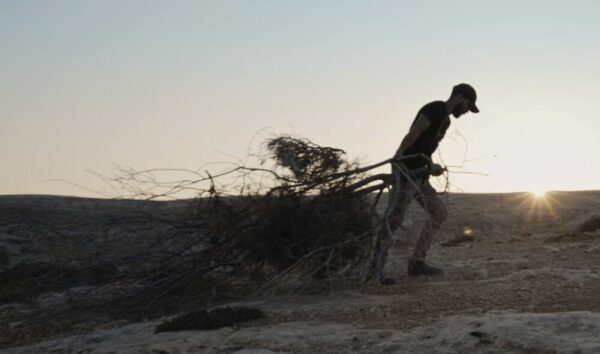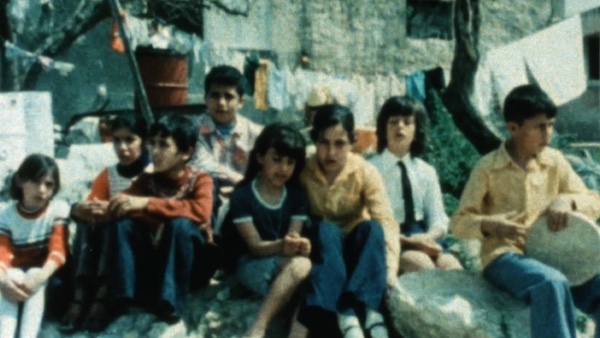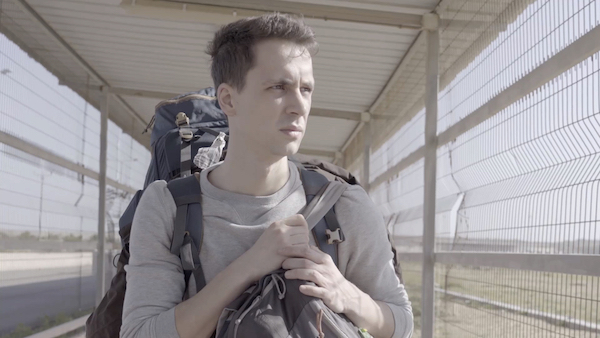Doc Talk: Eyes in Gaza — The Boston Palestine Film Festival Looks at Harsh Realities
By Peter Keough
Cinema at its best is a place where seemingly irresolvable conflicts can find, if not resolution, then some common ground.
Given the conflict raging in Gaza following the heinous Hamas attacks against innocent Israeli civilians, it seems like there could be no worse — or better — time for the 17th annual Boston Palestine Film Festival (October 13-22 online) to take place. Can audiences incensed by these catastrophic events benefit from the appeals to understanding, justice, and reconciliation that many of these films, especially the documentaries, are offering? Cinema at its best is a place where seemingly irresolvable conflicts can find, if not resolution, then some common ground.

A scene from Sarura: The Future Is an Unknown Place. Photo: Nicola Zambelli
Nicola Zambelli’s Sarura: The Future Is an Unknown Place (2023; available online October 13-22) visits the abandoned village of Sarura near the West Bank village of At-Tuwanis on the edge of the Negev Desert. It is land disputed between encroaching Israeli settlers and a group of young Palestinian activists — dedicated to nonviolence and armed only with agricultural tools and video cameras — who have taken up residence in local caves.
The primitive, bleakly beautiful surroundings take on a Biblical cast as the Palestinians work to transform the barren land by planting olive trees and raising sheep and goats. Their goal: that the former inhabitants return to the village and rejuvenate it. The settlers, meanwhile, have tried to intimidate them by killing livestock, burning the trees, and confronting them on their own land, often with guns. The Israeli army is drawn into these standoffs, invariably siding with the settlers, each incident resulting in the Palestinians losing more land. But not their hope or determination.
Zambelli had in fact shot another film, Tomorrow’s Land (2010), in the same location 10 years before shooting this one. The earlier effort featured some of the activists in Sarura when they were children. He intercuts shots from the earlier documentary with shots of the now-adult subjects in Sarura and it supplies a kind of Up-series effect. But there are dispiriting ironies, such as when one of the adults in the later film accompanies children to school to protect them from the attacks of settlers — just as he is seen in the earlier film going to school while being protected in the same way.

A scene from Reel No. 21 A.K.A. Restoring Solidarity (The Tokyo Reel). Photo: courtesy of the artist
Mohanad Yaqubi and Reem Shilleh’s Reel No. 21 A.K.A. Restoring Solidarity (The Tokyo Reel) (2022; available online October 13-22) is a compilation of clips from 20 propaganda videos and films made or collected by Japanese activists in solidarity with various Palestinian resistance groups. It opens with frighteningly familiar images: Butchered men, women, and children from the massacre of hundreds of Palestinians (the death toll estimates range from 460 to 3500 killed) in the Sabra and Shatila refugee camps that occurred during the Israeli invasion of Lebanon in 1982. The killings were perpetrated by Christian militia groups allied with the Israelis. Israel Defense Forces did not participate in the massacre, but they were aware of it and did nothing to stop it.
As provocative as those clips and many of the others might be, they have here been subsumed into a collage of texts in a Godardian meta-documentary. The filmmakers have collected these excerpts to serve as artifacts in “an archive of a revolution that never succeeded,” as co-director Yaqubi has put it in an interview. The bits of footage are shown raw and unrestored, with sprocket holes, scratches, and other imperfections, underscoring perhaps the fragility, artificiality, and incompleteness of such records — not to mention the distortions and manipulations imposed by ideology and partisan points of view. Interspersed with the found footage are shots of the archiving process — the film reels, an editing console, a spreadsheet with the title, date, and source of each entry typed in, making the effort to preserve such fragments of the past as much the subject of the film as the images themselves.

A scene from Erasmus in Gaza. Photo: courtesy of the artist
“I have a perfect world,” announces Riccardo Corradini, a 24-year-old Italian studying to become a doctor at the University of Siena, in Matteo Delbò and Chiara Avesani’s Erasmus in Gaza (2022; available online October 17-22). As a brief montage of Corradini relaxing and partying indicates, he is not exaggerating. Nonetheless, he has agreed to spend time in Gaza as part of the Erasmus Project, an EU program promoting international student exchanges. There he hopes to gain expertise in his chosen field, traumatic injuries — all too common in the Palestinian enclave, where a wave of protests against the Israeli authorities (the 2018-19 “Great March of Return” ) have resulted in many casualties.
After numerous bureaucratic complications, Corradini negotiates the long fenced-in corridors (eerily empty) and various checkpoints to enter Gaza. To his surprise, it is a welcoming place. His student colleagues and roommates are extremely friendly and eager to engage with the rare foreign visitor. They treat him to generous meals that he says are better than anything he gets in Italy. The word “Hamas” is rarely heard. The only cultural friction occurs when Corradini asks one of his Gazan pals if he disapproves of him having a girlfriend. His friend tells him that it’s not a big deal. Overall, the university and the hospital he visits seem modern and well equipped, even as they treat the flood of casualties coming in from the ongoing demonstrations confronting Israeli army and security forces at the border fence.
That’s when Corradini begins to have second thoughts. At first, he only observes the influx of gruesome cases involving demonstrators suffering from bullet wounds, mostly young men, but some women and children. When a boy is brought in whose leg has been amputated, he thinks he has reached his limit. But after being allowed to participate in treating casualties rather than just being an observer, his attitude changes. He gains a professional perspective, and his resolve stiffens.
Then Hamas launches a fusillade of rockets from Gaza into Israel, an uncanny, apocalyptic sight in the night sky. Corradini and his roommates brace for the retaliatory bombing attack, and this is one of the more compelling sequences in the film. They are frightened, but giggly and giddy as they listen to the blasts. As the attack comes nearer they retreat into the basement: they listen to “the big one” go off with a mixture of hilarity and terror. Later they check the footage of a camera left on the windowsill and watch a building a block away get leveled by a pinpoint strike, accompanied by screams and sirens.
Corradini survives and returns to Siena, where he graduates summa cum laude, his thesis a study of wounds from exploding bullets. As for the takeaway, Corradini reflects on the fact that he is free to leave, but his friends and colleagues cannot. At times, Erasmus in Gaza seems to be less interested in focusing on the suffering of the Palestinian people than emphasizing how Gaza can be a rewarding training ground for European professionals. Also, one wonders how much of Corradini’s experience there has been airbrushed. Be that as it may, such glimpses of what is happening in Gaza is a start at understanding the conflict.
“Medical language is all the same,” says a Palestinian student doctor early in Erasmus in Gaza. The language of cinema is also universal; one can only hope it possesses healing power as well.
Note:
On October 11 the festival canceled all the live screenings of films that were scheduled at various venues, including the Coolidge Corner Theatre and Museum of Fine Arts. However, they have maintained the online program.
They released this statement:
The Boston Palestine Film Festival extends support to our community during this very difficult time. As the tragic events continue to unfold, we have been thinking about the responsibility of the festival at this time.
We have come to the decision to postpone the live component of this year’s festival.
BPFF strives to create a space for our community to gather and that space is needed today more than ever. However, we are committed to centering your safety and being sensitive to all members of our community who have been impacted.
A number of educational and reflective films will still be available via our online program from October 13-22 in an effort to help share context around the Palestinian reality.
Thank you to our community, partners, venues, co-presenters, and sponsors for your understanding and support. Our team will be in touch regarding ticketing and refunds in the coming week.
In solidarity,
BPFF
Regarding safety concerns, festival programmer Michael Maria told me in an email, “The festival has not received direct threats ourselves, but there have been threats directed at student organizations that have led to event cancellations, and I understand that our venues (MFA, Coolidge) have received communications that made them recommend additional security details for our screenings, if they were to go forward.”)
Peter Keough writes about film and other topics and has contributed to numerous publications. He had been the film editor of the Boston Phoenix from 1989 to its demise in 2013 and has edited three books on film, most recently For Kids of All Ages: The National Society of Film Critics on Children’s Movies (Rowman & Littlefield, 2019).
